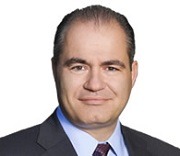The Marriage of Mylan and Pfizer’s Upjohn
Earlier this month, Mylan and Pfizer agreed to combine Mylan with Upjohn, Pfizer’s off-patent branded and generic established medicines business. The deal is expected to close in mid-2020 and will create a new company with pro forma 2020 revenues of $19 billion to $20 billion. An inside look at the new company.
Inside the new company
The new company will be renamed and rebranded at closing, but the Upjohn name will be used in China and select emerging markets. It will be led by Mylan’s current Chairman Robert J. Coury, who will serve as Executive Chairman of the new company. Michael Goettler, current Group President, Upjohn, will serve as Chief Executive Officer (CEO) and Rajiv Malik, current Mylan President, will serve as President of the new company. Heather Bresch, Mylan’s current CEO, will retire from Mylan upon the close of the transaction, which is expected to close in mid-2020. The Board of Directors of the new company will include its Executive Chairman and its CEO as well as eight members designated by Mylan and three members designated by Pfizer for a total of 13 members. Upon closing, Pfizer shareholders would own 57% of the combined new company, and Mylan shareholders would own 43%. The new company will be domiciled in the US and incorporated in Delaware and will operate global centers in Pittsburgh, Pennsylvania; Shanghai, China, and Hyderabad, India.
 |
|
Michael Goettler |
Strategic rationale for the deal
For both Mylan and Pfizer, the deal represents the execution of previously announced plans or previous considerations for their companies. Last year (August 2018), Mylan, a generic-drug company, formed a strategic review committee to evaluate alternatives for its businesses following weak performance in its North American segment. Mylan, like other large generic-drug companies, faced increased pricing pressure and competition, particularly in the US market. This led to not only Mylan seeking strategic alternatives for its businesses, but for other larger companies to proceed with restructuring. Teva Pharmaceutical Industries initiated a major restructuring plan in late 2017 to address declining revenue from its generics business, large debt caused by its $40.5-billion acquisition of Allergan’s generic business in 2016 and subsequent weak performance in its generics business, and declining revenue from its number one specialty product, Copaxone (glatiramer acetate) for treating multiple sclerosis, which faced its own generic-drug competition. Last year (September 2018), Novartis announced divestiture of the US dermatology business and generic US oral solids portfolio of Sandoz, its generics business, to Aurobindo Pharma USA for approximately $1 billion. Novartis announced the deal as part of its strategy to focus on complex generics, value-added medicines, and biosimilars in order to achieve sustainable and profitable growth in the US over the long term. The deal is expected to close in 2019. Also last year (August 2018), Perrigo announced plans to separate the company’s prescription pharmaceuticals business, which consists primarily of generics, following a strategic portfolio review due to weak performance. A separation of its Rx business would leave the company’s primary focus on consumer healthcare or over-the-counter (OTC) products. Earlier this month (August 2019), Perrigo said that it has not set a timetable for the separation but that it has made progress related to the preparations for separation, which may include a possible sale, spin-off, merger or other form of separation.
For its part, Pfizer has been evaluating possible separation of its generics and established product business dating back to when the company was led by Ian Read, who stepped down as Chief Executive Officer (CEO) earlier this year (January 2019) with Albert Bourla, formerly the Chief Operating Officer of Pfizer, taking the role of CEO. Read, who also was formerly Chairman of Pfizer, has since transitioned to Executive Chairman of the company. Pfizer is now organized into three main areas: the Biopharmaceutical Group, which includes its prescription, innovator drugs; Upjohn, which includes it off-patent branded and generic established medicines business; and Consumer Healthcare, which includes its over-the-counter business.
The new company at a glance
The new company of a combined Mylan and Pfizer Upjohn is expected to have pro forma 2020 revenues of $19 billion to $20 billion. Pro forma 2020 adjusted earnings before interest, taxes, depreciation and amortization (EBITDA) is anticipated to be in the range of $7.5 billion to $8.0 billion, including phased synergies of approximately $1 billion annually to be realized by 2023. Pro forma free cash flow for 2020 is expected to be more than $4 billion. Pfizer says Upjohn will issue $12 billion of debt at or prior to separation, with gross debt proceeds retained by Pfizer. The new company will have approximately $24.5 billion of total debt outstanding at closing, including $12 billion of gross debt for Upjohn to fund a $12-billion preclosing cash payment to Pfizer.
With the separation of Upjohn, following the close of the transaction, Pfizer expects to generate 2020 revenues of approximately $40 billion, driven by its science-based Biopharmaceuticals Group, with its Innovative Health business units (excluding Consumer Healthcare), including biosimilars, as well as a Hospital business unit that commercializes a global portfolio of patent-protected and off-patent injectable and anti-infective medicines.
In addition, Pfizer anticipates achieving income before tax margins (expenses as a percentage of revenue plus other income and deductions) in the mid-30s% range and operating cash flow of $11 billion to $12 billion. Pfizer also expects that following the closing of the transaction, the combined dividend dollar amount received by Pfizer shareholders in the event the equity distribution is structured as a spinoff, based upon the combination of continued Pfizer ownership and an expected 0.12 shares of the new company granted for each Pfizer share, will equate to Pfizer’s dividend amount in effect immediately prior to closing.
On a market basis based on pro forma revenues, the new company will have approximately 55% of its revenues from developed markets (North America and Europe), approximately 30% in Asia Pacific, and 15% in emerging markets. The pro forma revenue mix by product type breaks down as follows: 56% for prescription drugs (physician-prescribed and marketed mostly with a brand name); 34% for unbranded generics (of which, 19% is ex-US and 15% is US); 6% for over-the-counter products; and 4% for biologics. The companies say that they expect $3 billion in new revenue from products expected to launch by 2023 and that approximately two-thirds of its pipeline will be complex unbranded generics, biosimilars, and global key brands.
On a manufacturing basis, the combined company of Mylan and Upjohn will have 51 manufacturing sites: 25 oral solid dosage manufacturing sites; seven injectable drug-manufacturing sites; eight complex dosage form sites; and 11 active pharmaceutical ingredient manufacturing sites. The new company will produce more than 80 billion doses annually with 3,000 brands/molecules and serve 165 countries worldwide. The combined new company will have 45,000 employees.




